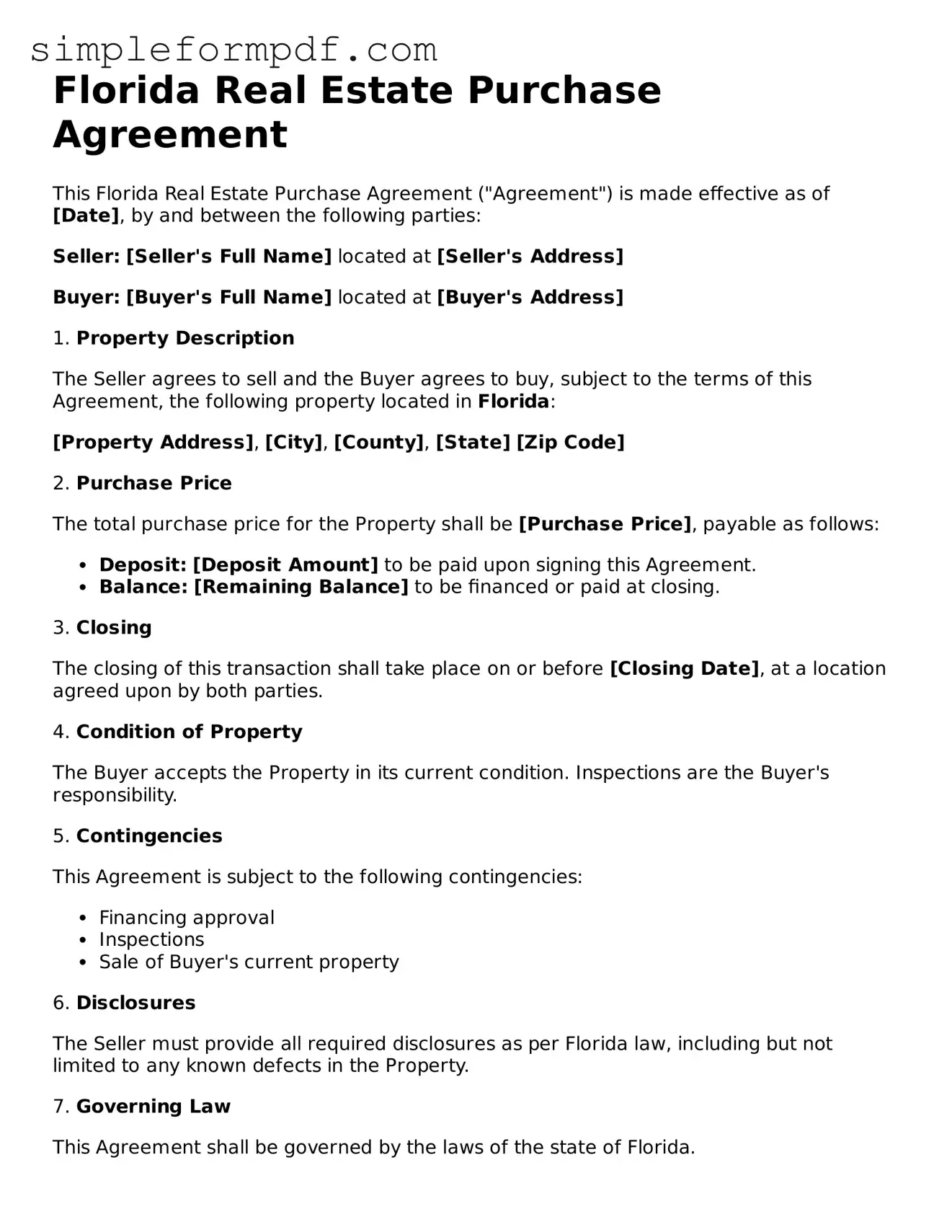Florida Real Estate Purchase Agreement
This Florida Real Estate Purchase Agreement ("Agreement") is made effective as of [Date], by and between the following parties:
Seller: [Seller's Full Name] located at [Seller's Address]
Buyer: [Buyer's Full Name] located at [Buyer's Address]
1. Property Description
The Seller agrees to sell and the Buyer agrees to buy, subject to the terms of this Agreement, the following property located in Florida:
[Property Address], [City], [County], [State] [Zip Code]
2. Purchase Price
The total purchase price for the Property shall be [Purchase Price], payable as follows:
- Deposit: [Deposit Amount] to be paid upon signing this Agreement.
- Balance: [Remaining Balance] to be financed or paid at closing.
3. Closing
The closing of this transaction shall take place on or before [Closing Date], at a location agreed upon by both parties.
4. Condition of Property
The Buyer accepts the Property in its current condition. Inspections are the Buyer's responsibility.
5. Contingencies
This Agreement is subject to the following contingencies:
- Financing approval
- Inspections
- Sale of Buyer's current property
6. Disclosures
The Seller must provide all required disclosures as per Florida law, including but not limited to any known defects in the Property.
7. Governing Law
This Agreement shall be governed by the laws of the state of Florida.
8. Signatures
Both parties agree to the terms of this Agreement and signify their acceptance by signing below:
Seller's Signature: ______________________ Date: ______________
Buyer's Signature: ______________________ Date: ______________
This document serves as a legal agreement between the parties and should be reviewed by legal counsel prior to execution.
